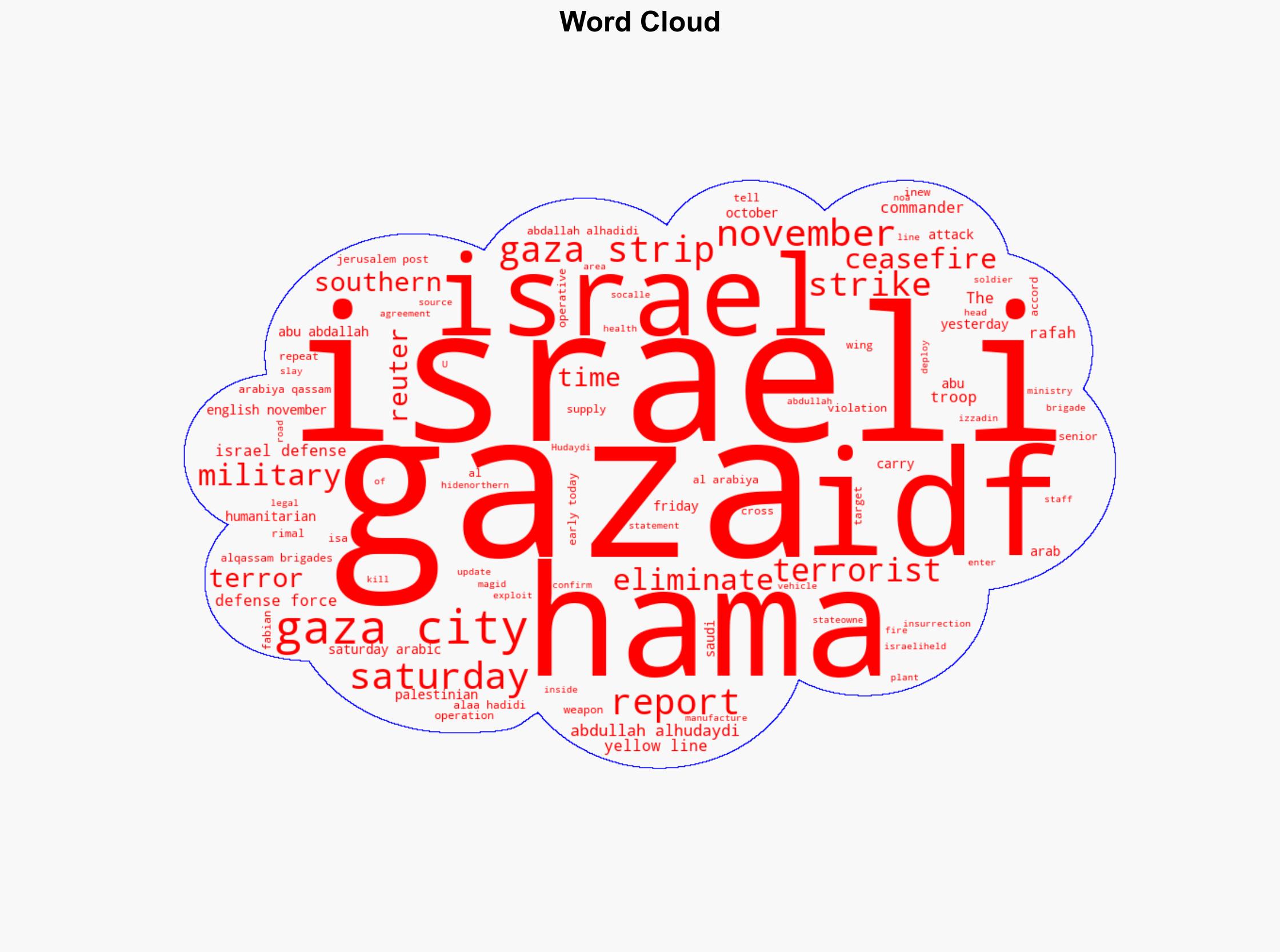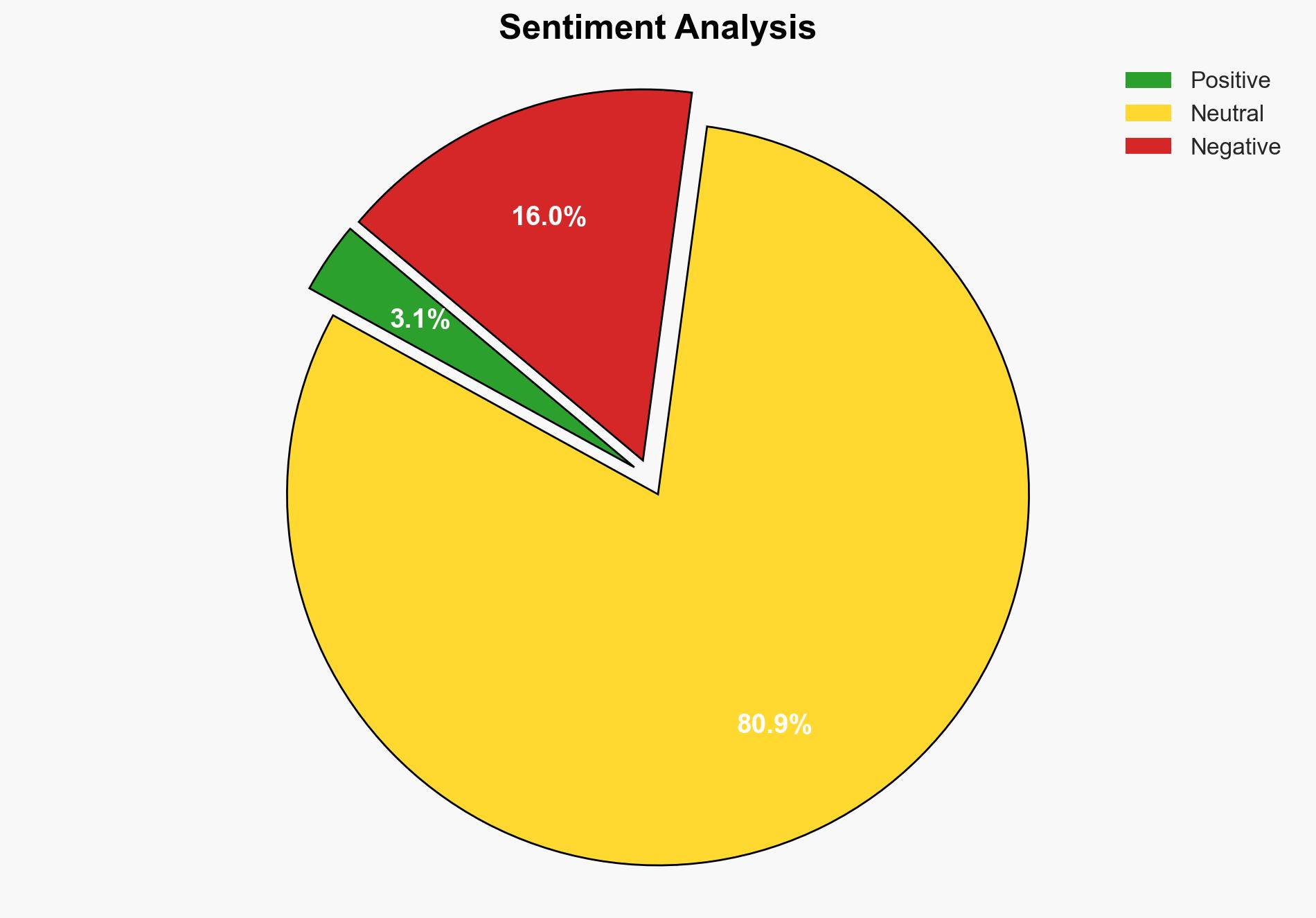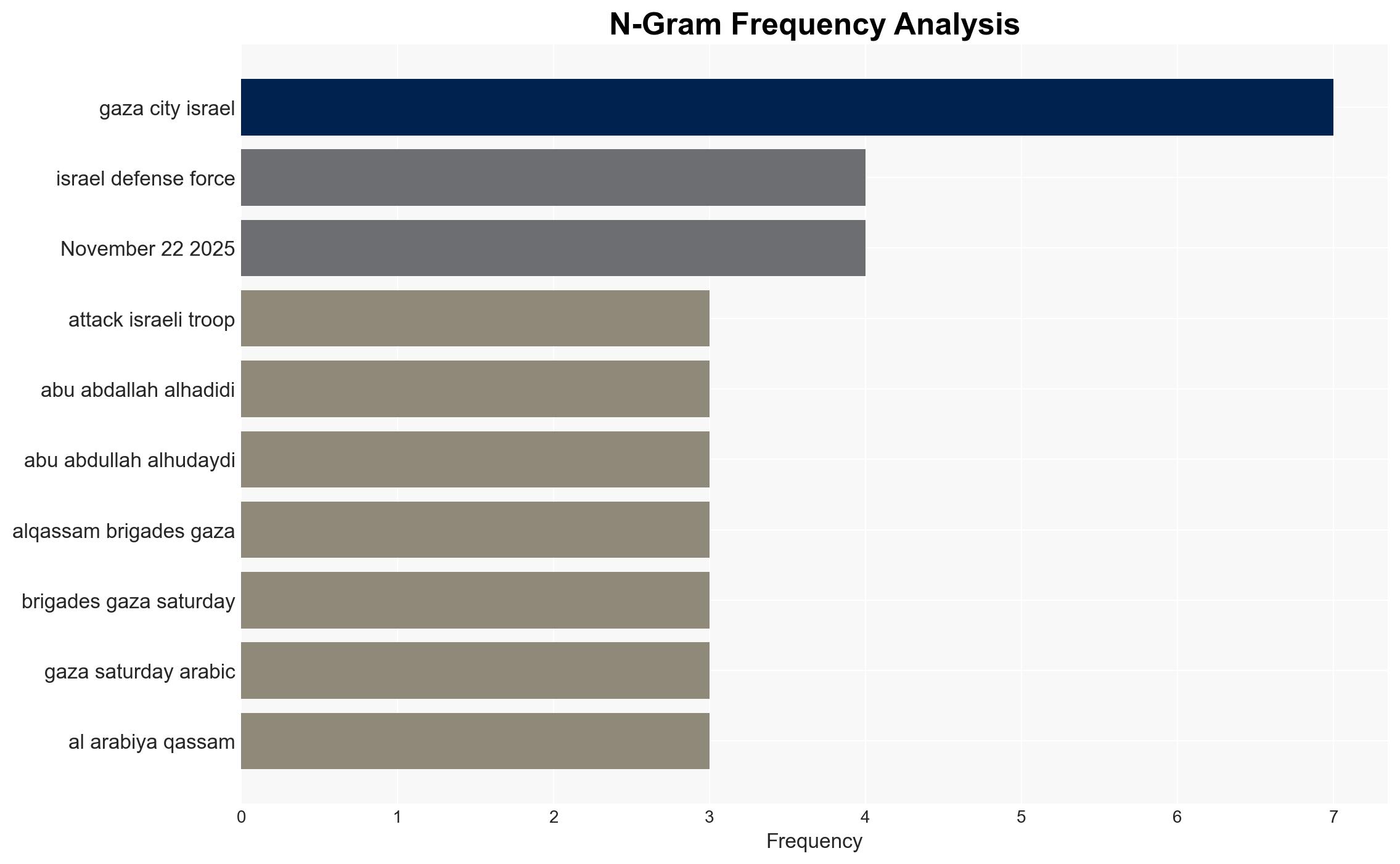Report IDF Eliminates Senior Hamas Commander Amid Repeated Ceasefire Violations in Gaza
Published on: 2025-11-22
AI-powered OSINT brief from verified open sources. Automated NLP signal extraction with human verification. See our Methodology and Why WorldWideWatchers.
Intelligence Report:
1. BLUF (Bottom Line Up Front)
The most supported hypothesis is that the Israeli Defense Forces (IDF) targeted and eliminated a senior Hamas commander in response to repeated ceasefire violations by Hamas, aiming to deter future violations and degrade Hamas’s military capabilities. Confidence Level: Moderate. Recommended action includes diplomatic engagement to reinforce ceasefire terms and intelligence operations to monitor further Hamas activities.
2. Competing Hypotheses
Hypothesis 1: The IDF’s elimination of the senior Hamas commander was a calculated response to repeated ceasefire violations by Hamas, intended to deter future breaches and weaken Hamas’s operational capabilities.
Hypothesis 2: The IDF’s action was primarily a preemptive strike to disrupt an imminent threat posed by Hamas, independent of the ceasefire violations, focusing on neutralizing a key figure in the weapons supply chain.
Hypothesis 1 is more likely due to the context of repeated ceasefire violations and the IDF’s stated retaliatory actions. Hypothesis 2 lacks direct evidence of an imminent threat beyond the ongoing violations.
3. Key Assumptions and Red Flags
Assumptions: It is assumed that the IDF’s actions were based on credible intelligence regarding ceasefire violations and the operational role of the targeted commander.
Red Flags: Potential bias in reporting from Israeli and Hamas-affiliated sources could skew the narrative. The timing of the strike may also be politically motivated, requiring scrutiny.
Deception Indicators: Discrepancies in casualty reports and conflicting accounts of the incident from different sources may indicate attempts to manipulate public perception.
4. Implications and Strategic Risks
The elimination of a senior Hamas commander could lead to increased hostilities and retaliatory actions from Hamas, escalating the conflict. Politically, this may strain Israel’s relations with neighboring countries and international stakeholders. Economically, prolonged conflict could disrupt regional trade. Informationally, both sides may engage in propaganda to sway international opinion.
5. Recommendations and Outlook
- Engage in diplomatic efforts to reinforce the ceasefire terms and prevent further escalation.
- Enhance intelligence operations to monitor Hamas’s activities and preempt potential threats.
- Best Scenario: Successful diplomatic engagement leads to a reinforced ceasefire and reduced hostilities.
- Worst Scenario: Escalation into a broader conflict, drawing in regional actors and destabilizing the area.
- Most-likely Scenario: Continued low-intensity conflict with sporadic violations and retaliations, maintaining a fragile status quo.
6. Key Individuals and Entities
Abdullah Alhudaydi – Senior Hamas Commander
Alaa Hadidi – Supply Chief, Hamas’s Weapon Manufacturing Operation
7. Thematic Tags
Regional Focus, Regional Focus: Middle East, Israel, Gaza
Structured Analytic Techniques Applied
- Causal Layered Analysis (CLA): Analyze events across surface happenings, systems, worldviews, and myths.
- Cross-Impact Simulation: Model ripple effects across neighboring states, conflicts, or economic dependencies.
- Scenario Generation: Explore divergent futures under varying assumptions to identify plausible paths.
Explore more:
Regional Focus Briefs ·
Daily Summary ·
Support us





